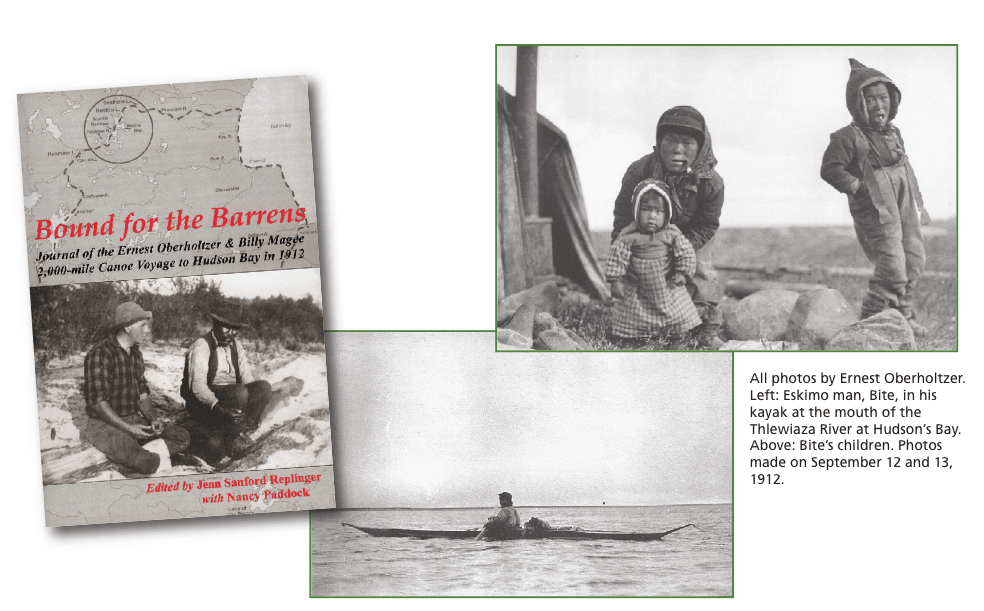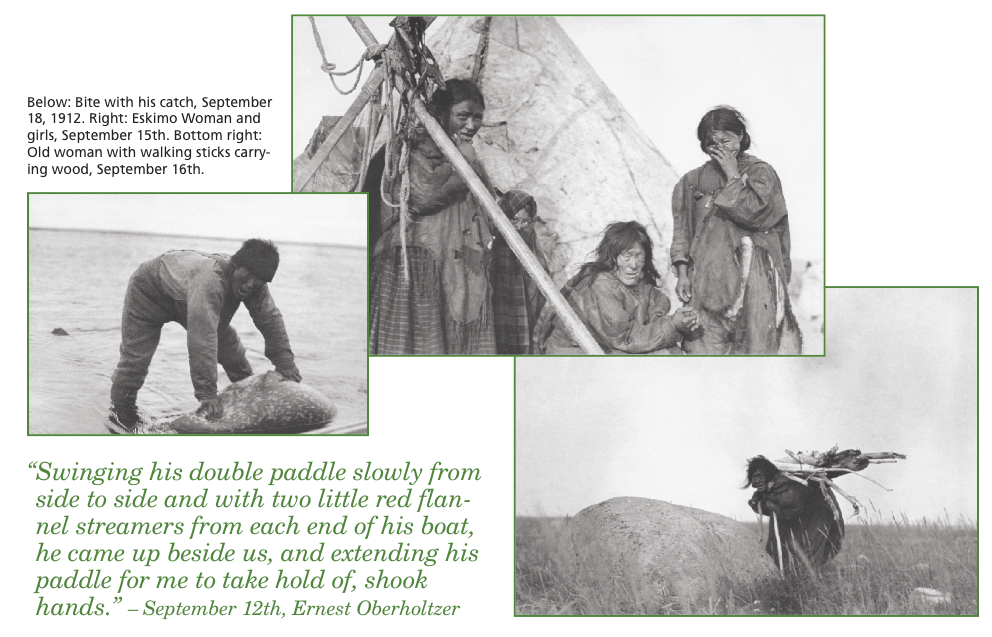Bound for the Barrens
By Ernest Oberholtzer Edited by Jean Sandford Replinger
Mallard Island Books 2012 $19.95
Reviewed by Michael Peake. Originally published in Che-Mun, The Journal of Canadian Wilderness Canoeing
This remarkable journey at the end of the classic era of land-based travel in the north was not published until 2001 when the lavish Toward Magnetic North book appeared. Subsequently veteran Arctic hand David Pelly wrote The Old Way North in 2008 which looked at this trip in detail.
Well those books were the finished and decorated cakes of that great trip—and now we have a book of the ingredients. Bound for the Barrens is a full transcription of the wonderful field notes and journals of Oberholtzer’s six month trip from Cumberland House to the bottom of Lake Winnipeg via the Reindeer, Cochrane and Thlewiaza rivers plus Hudson Bay and the Hayes River in an 18-foot Chestnut prospector which is another of the stars of this story.
And despite the fact I knew this tale fairly well from enjoying the other two books, I found these journals absolutely fascinating. It will appeal to Che-Mun readers especially as I think they would have a better understanding of reading someone’s immediate impressions noted during a trip.
Perhaps the most interesting parts are Ober’s wonderful observations and insights into the people he met along the way in that summer of 1912 when the near north was a busy and bustling place. Oberholtzer, who was just 24 when he did the trip, has a great eye for detail and his adventures among the northern world of 1912 are quite revealing. I found it very compelling to be guided through the machinations and planning for the trip they were about to undertake and their fruitless search for a guide to take them into an unknown area. Ober and Magee, a native from northern Ontario, had often travelled the waters of Quetico but neither had been to the far north.
It was interesting to read how much study the young Ober put into the Tyrrell trips, spending time at the British Museum reading his reports and wishing to emulate the Tyrrells. He wanted to follow their route and was taken on his own unique one.
The chance meeting with the tremendously able Inuk named Bite and his family near the mouth of the Thlewiaza provides the most interesting part of the book. As David Pelly pointed out, Bite opened Ober’s eyes to a new type of survival on the ocean. With his young family traveling with them, Bite showed the pair how to live on and navigate the particularly treacherous west Hudson Bay coastline—one of the most dangerous places on the planet to paddle a canoe.
Ober had great observations on almost everyone they met—and they met quite a few people—everyone except his stalwart travelling companion Billy. There are not many photos of Billy and he is often treated as the servant he sort of was—but not without respect. The pair, separated by 25 years, had a lifelong bond in a way that we find somewhat difficult to understand today. Things were different then. People were described differently. That’s just the way it was.
It is very surprising that Oberholtzer did not publish any of this trip in his lifetime. He went on to a very distinguished career of environmental stewardship. This trip was clearly the cornerstone of that. However, he was clearly aware that his trip had some newsworthiness when he ends up speaking with a newspaperman at the end of the trip and says he purposely did not tell him much at all—presumably to keep it for his own effort.
The book concludes with a fine summary by retired University of New Brunswick professor Bob Cockburn, to whom this book is dedicated and an eminent P. G. Downes expert who also worked on this. His insight is valued as he knows the areas of northern Saskatchewan and Manitoba from a historical travel perspective better than almost anyone.
The journal contains all the usual things any good northern trip journal would. This includes a full listing of supplies purchased and all the other info gathered along the way. One particular small but interesting addition is under Miscellaneous at the end of the journal. Dozens of lines and snippets are included—things which wouldn’t have meaning to an attentive reader—lines like “Little bells to keep away the wolves in winter. Joins the circus” and “Huskie wakes you at 3 o’clock in the morning to ask if you are cold. Very solicitous.” Little chinks in the logs of a major wilderness trip that many of us would write.
The fact that this pair made this remarkable journey unguided under difficult conditions makes it all the more appealing. The book features numerous photos and maps and is fully footnoted. A most wonderful read for canoe trippers of all eras.
This article appeared in the Summer 2012 edition of Wilderness News >



